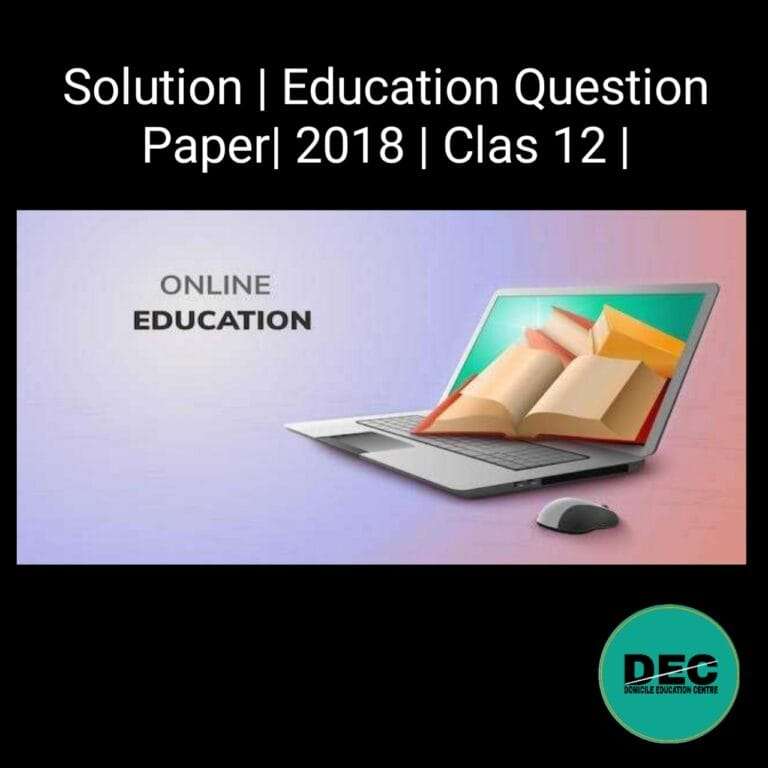2018
EDUCATION
Full marks: 100
Pass marks: 30
Time: Three hours
The figures in the margin indicate full marks for the questions.
No. 1 carries 1 marks each …………………. 1 x 12 = 12
No. 2 carries 2 marks each …………………. 2 x 12 = 24
No. 3 carries 4 marks each …………………. 4 x 10 = 40
No. 4 carries 6 marks each …………………. 6 x 4 = 24
Total = 100
1. Answer the following Questions:
Fill in the Blanks:
(a) Multipurpose secondary schools in Assam were established on the basis of recommendation of ______________ Commission.
Ans: Secondary Education Commission.
(b) Absence of direct contact between teacher and students is an important characteristics of ___________ education.
Ans: Non-Formal Education.
(c) Stimulus has no influence on _____________ attention.
Ans: Involuntary.
(d) Through repeated attempts a student succeeds in computing a sum by himself. Such learning is supported by ___________ method of learning.
Ans: Trial and Error.
(e) Counselling is __________ function of mental hygiene.
Ans: Preventive.
(f) All scores are taken into consideration in finding out _________ as measure of Central Tendency.
Ans: Mean.
Give short answer in one sentence:
(g) What is the objective of ‘Early Childhood Care and Education’?
Ans: The objective of ‘Early Childhood Care and Education stress on the holistic nature of child development namely – nutrition, health and social, mental, physical, moral and emotional development.
(h) Who introduced the concept of Population Education?
Ans: In the year 1982, Novel peace winner ‘Alva Myrdal’ introduced the concept of Population Education.
(i) ‘Learning involves totality of perception’ – which method of learning is related with this statement?
Ans: Insightful method.
(j) Is it correct to say that memory always aims at the past? – Justify your answer.
Ans: Memory is the revival of post expenses in it original form which depends upon sensory of learning experience, retaining power, recall or remembering and recognition of past experience. Therefore, we can say that memory always aims at the past.
(k) Mention an objective of mental hygiene.
Ans: The objective of mental hygiene is to curing and preventing mental diseases, personality disorders and other abnormalities for balancing adjustment and healthy development of personality.
(l) 25% of the scores in a distribution is less than the score 10 and 25% is more than the score 40. Find out the quartile deviation of the distribution.
Ans: 15

